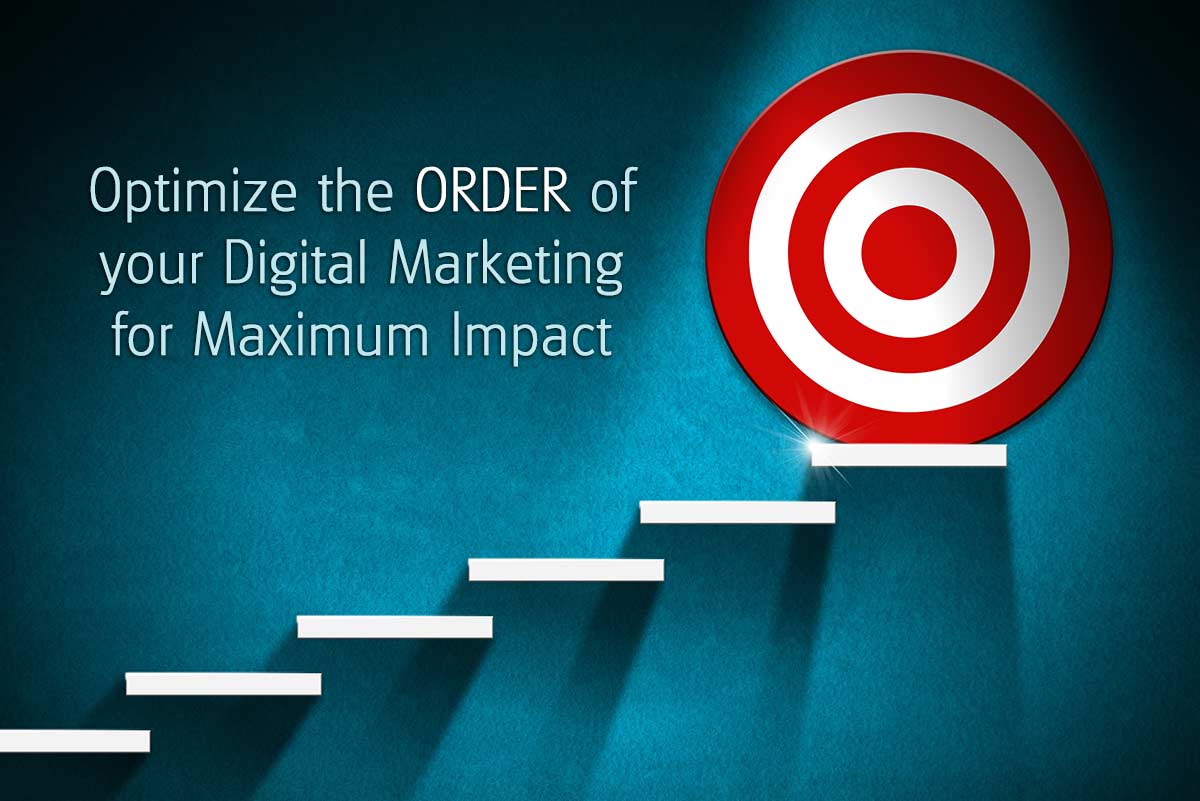The Ideal Order of Digital Marketing for Maximum Impact
A structured and strategic approach to digital marketing aims to minimize waste (time and money) and maximize your return on investment. Following a systematic order can ensures that resources are utilized effectively and marketing campaigns are productive and aligned with business goals.
TL;DR
In this post, we outline the ideal order for digital marketing to help businesses maximize their ROI and avoid ineffective campaigns. The steps include:
- Research: Define your Ideal Customer Profile (ICP), conduct keyword research, analyze competitors, perform a gap analysis, and monitor trends.
- Foundational Assets: Dial in a strong, professional brand, create a Unique Value Proposition (UVP), develop compelling offers, and set up your domain, website, and email.
- Email Marketing System: Implement lead magnets and automation for nurturing leads.
- Online Accounts: Set up essential online accounts like Google Business Profile, Google Search Console, Google Analytics 4, Meta Pixel, and listings on Apple and Bing.
- 12-Month SEO Plan: Develop a comprehensive SEO strategy for traffic and long-term growth.
- 12-Month Content Plan: Plan, write and optimize consistent, strategic content.
- Outreach: Engage in influencer marketing, guest blogging, and link building.
- Ads: Launch paid advertising campaigns to drive immediate traffic and conversions.
Following this order ensures efficiency, cost-effectiveness, sustainability, and scalability in your digital marketing efforts.
Here’s an ideal sequence of 8 steps to follow:
1) Research
Define Your Ideal Customer Profile (ICP)
Understanding who your ideal customers are is the foundation of all marketing efforts. An ICP helps you tailor your marketing strategies to attract and engage the right audience.
Keyword Phrase Research
Identifying the keywords and phrases your target audience uses to search for your products or services is essential for SEO and content creation. This ensures that your website and content are optimized to appear in relevant search results.
Competitive Intelligence
Analyzing your competitors’ strategies gives you insights into what works and what doesn’t in your industry. This information helps in identifying opportunities and vulnerabilities, allowing you to position your business effectively.
Gap Analysis
This involves identifying gaps in your current marketing strategy compared to your competitors. It helps pinpoint areas where you can capitalize on opportunities that your competitors might be missing.
2) Foundational Assets
Brand Development / Refinement
Establishing a strong brand identity is crucial for differentiating your business from competitors. Effective branding communicates your value proposition and builds trust with your audience.
Articulate Your Unique Value Proposition (UVP)
Your UVP is what sets you apart from competitors. It clearly articulates why customers should choose your product or service over others, highlighting the unique benefits you offer.
Offer Creation
Developing compelling offers that resonate with your target audience is essential for driving conversions. These offers should address the needs and pain points of your ICP.
Domain, Website, Email
A professional online presence starts with a domain name, a well-designed website, and a branded email address. Your website is the central hub for all your digital marketing efforts and must be ready to convert visitors.
3) Email Marketing System
Lead Magnets and Automation
Creating valuable lead magnets (e.g., ebooks, checklists) helps capture potential customers’ contact information. Automation systems then nurture these leads through personalized email sequences, moving them closer to conversion. You should have your list-building system in place from day one.
4) Online Accounts
Google Business Profile (GBP), Google Search Console (GSC), Google Analytics 4 (GA4), Meta Pixel
Setting up these essential online accounts provides valuable insights into your website traffic, user behavior, and ad performance. They are critical for monitoring and optimizing your marketing efforts.
Apple, Bing, Listings
Ensuring your business is listed on various platforms like Apple Maps, Bing, and other local directories increases your online visibility and makes it easier for potential customers to find you.
Social Media
Establishing a presence on social media platforms relevant to your audience is important for brand awareness, engagement, and driving traffic to your website.
5) 12-Month SEO Plan
A long-term SEO strategy is vital for improving your website’s organic search rankings. A well-structured plan includes on-page and off-page SEO, content optimization, and regular performance monitoring.
6) 12-Month Content Plan
Content is king in digital marketing. A comprehensive content plan outlines what type of content will be created, how it will be distributed, and how it aligns with your marketing goals. This ensures consistent and strategic content production.
7) Outreach
Outreach efforts, including influencer marketing, guest blogging, and link building, help expand your reach and authority in your industry. These efforts drive traffic, improve SEO, and increase brand credibility.
8) Ads
Paid advertising campaigns (e.g., Google Ads, social media ads) are effective for driving immediate traffic and conversions. However, they should be implemented after the foundational elements are in place (steps 1-7) to ensure they are targeting the right audience and delivering maximum ROI.
Why This Order Is Important
Efficiency
Following this order ensures you build a strong foundation before moving on to more complex marketing activities. It prevents the common mistake of diving into ads or content creation without understanding your audience or having a solid brand identity.
Cost Effectiveness
Starting with research and foundational assets allows you to allocate your budget more effectively. By understanding your ICP, keyword strategy, and the competitive landscape, you can make informed decisions that prevent wasting money on ineffective campaigns.
Sustainability
A structured approach helps in creating sustainable marketing efforts. For instance, a 12-month SEO and content plan ensures consistent growth and visibility, while a well-set-up email marketing system nurtures leads over time.
Scalability
Once the foundational elements are in place and performance is proven, scaling your marketing efforts becomes easier and more effective. With a clear UVP, optimized website, and robust analytics in place, you can confidently invest in paid ads and outreach, knowing they will yield positive results.
By following this ideal order, business owners can avoid the pitfalls of unproductive marketing campaigns and achieve their goals more efficiently and effectively.




